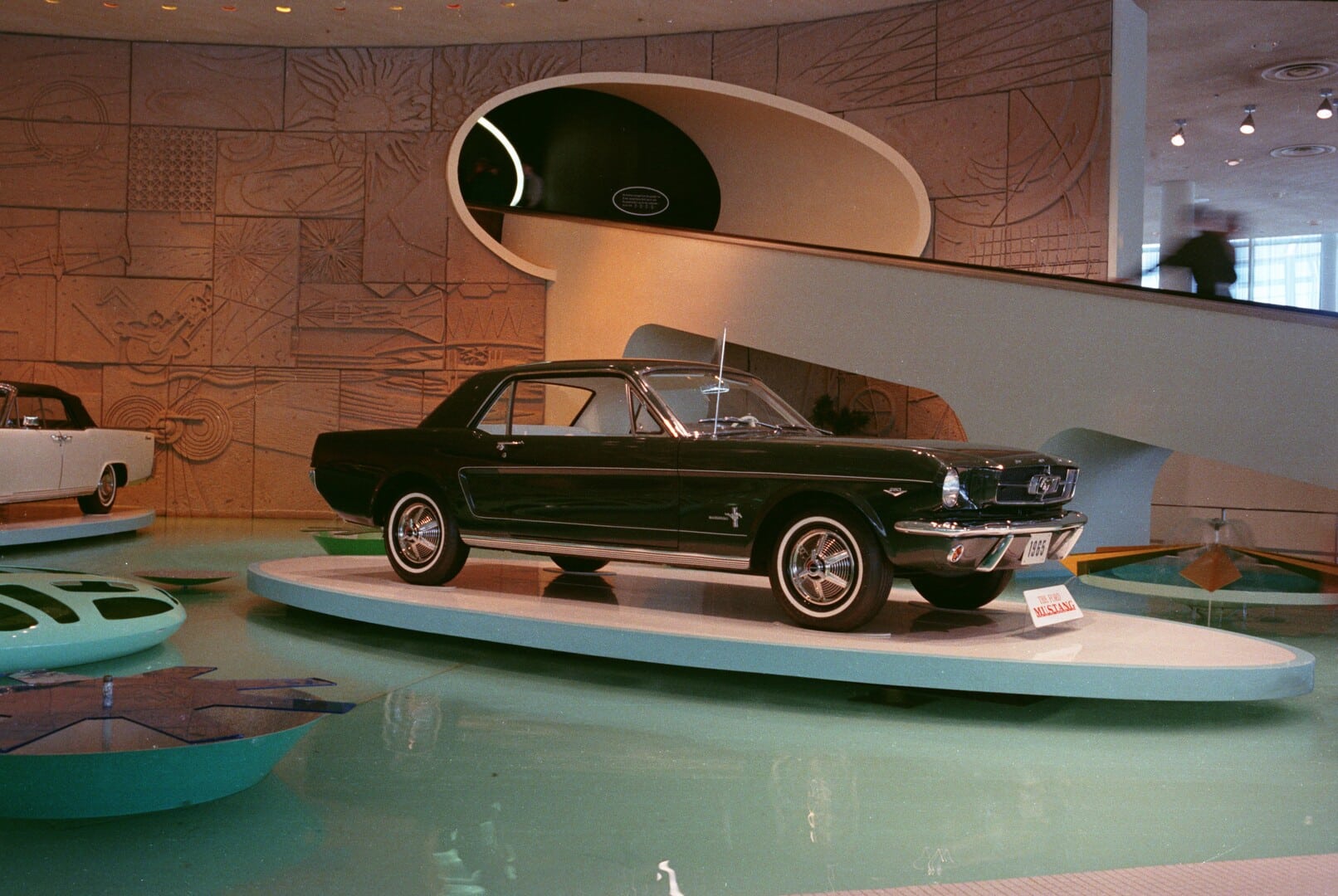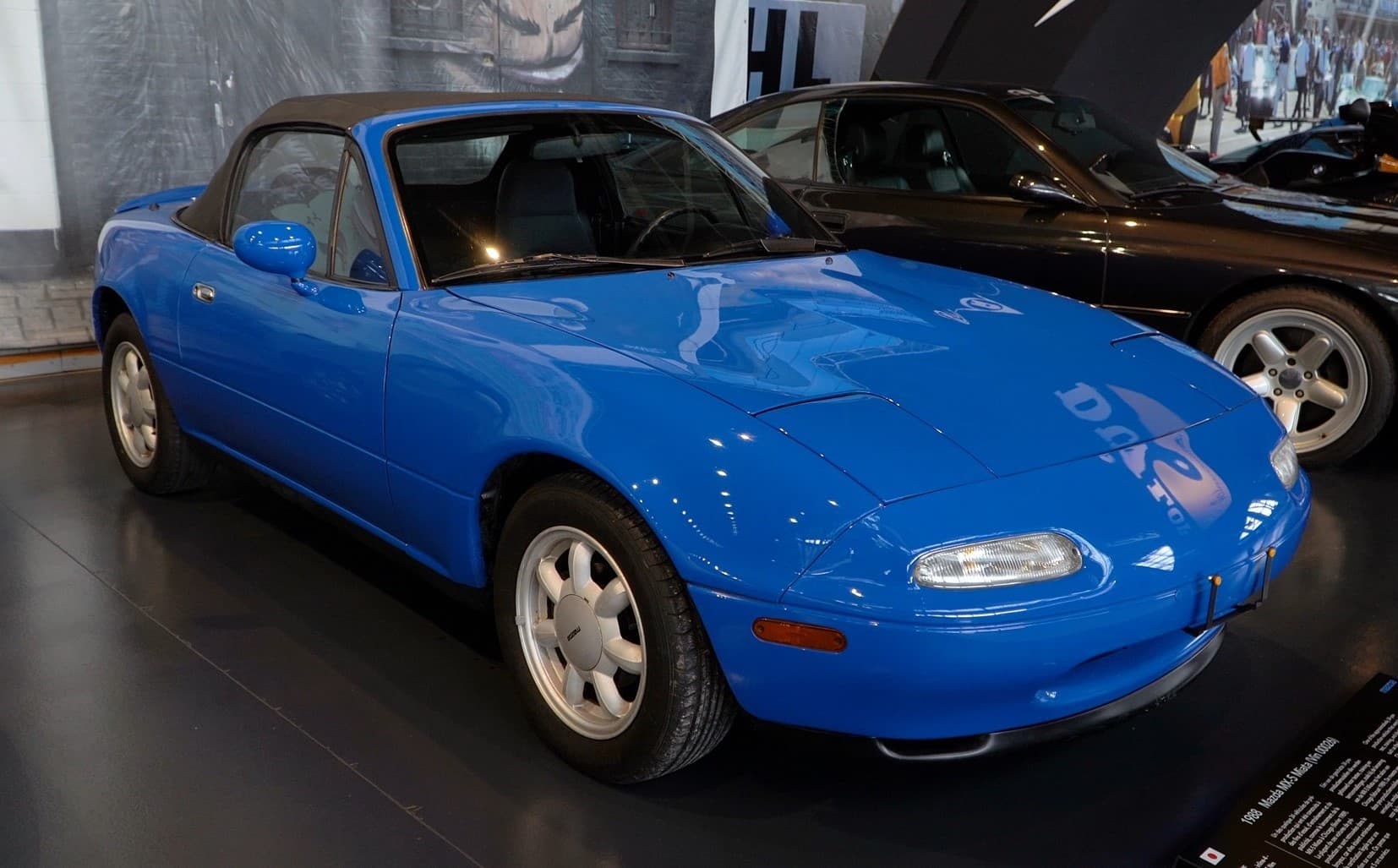
Hagerty 2024 Future of Driving Survey
- Hagerty’s 2024 Future of Driving survey indicates a growing interest in collector cars among younger generations.
- Nearly 80 percent of Gen Z respondents said they either love or like driving.
- Social media, film, and video games are popular gateways into automotive culture. Meanwhile, some Millennials prefer DIY repairs and maintenance work.
Fountain of Youth
“There’s an adage in Detroit,” writes Tom Glatch on page 44 in The Art of Mopar. “You can sell an old man a young man’s car, but you can never sell a young man an old man’s car.”
Glatch opens chapter five with this adage in reference to the 1967 Dodge Charger 426 Hemi. At that time, Baby Boomers were hungry for a different type of car, evidenced by the debut of the Ford Mustang in April 1964 at the New York World’s Fair.
By 1966, Ford had sold its one-millionth Mustang, with data showing that the median age of Mustang buyers was 31. More than 28 percent of Mustang buyers were younger than 25, a noticeable contrast from the median age of a regular Ford car purchaser at 42.
In The Art of Mopar, Glatch writes about how the 1966 “Dodge Revolution” advertising campaign was meant to jump-start the brand in the public eye. As a counter to “Mustang Maina” and that tiger under the hood of the Pontiac GTO, this new era for Dodge would show the brand as youthful and vibrant—not an aging and irrelevant nameplate—with exciting and powerful cars in its lineup.
Although we are admittedly fast-forwarding a bit and skipping over other essential aspects of automotive history that warrant further study, we can see how the muscle car era in the United States resulted from the Big Three’s targeting of the younger demographic. The consensus then by the Big Three was that Baby Boomers wanted to drive but wanted to drive something they considered their own.

Two Sides of The Story
Younger generations and their interest in cars and driving may elicit a different conversation in the 2020s than in the 1960s and ’70s. Financial, environmental, and safety concerns are cited as reasons why younger generations are less apt to own a vehicle or delay getting their license, relying on public transit or e-bikes and e-scooters to move about. Meanwhile, other bodies of research show younger generations are interested in cars and driving, fueled by their exposure to things like film, video games, and social media.
One such body of research is Hagerty’s 2024 Future of Driving survey, the findings of which were released in late July 2024. Hagerty commissioned international market research agency OnePoll (Talker Research) to survey more than 2,000 Americans about the role cars play in their life and their behaviors and sentiments related to cars and driving.
“Hagerty is deeply connected to car culture and the automotive community, so understanding these trends is crucial for navigating the evolving landscape, which helps us better serve enthusiasts as well as our current and potential members,” said Brian Rabold, Vice President of Hagerty Automotive Intelligence. “The Future of Driving survey is just one step toward understanding how the next generation thinks and feels about driving, the collector car market, and car culture.”
What The Survey Found
Hagerty’s 2024 Future of Driving survey indicates a growing interest in collector cars, trucks, and motorcycles among Gen Z, defined by the Pew Research Center as those born between 1997 and 2012. In the survey, nearly half (47 percent) expressed interest in owning a classic car, although interest from Gen Z respondents was significantly greater at 60 percent, compared to 31 percent of Baby Boomers.
Among Gen Z respondents, 32 percent said they have owned or currently own a classic or enthusiast vehicle. Millennials were not far behind at 30 percent.
“The most enlightening finding is that the generational shift is here,” Rabold explained. “Stepping back a little further, 77 percent of Gen Z respondents said they either loved or liked driving, indicating a promising future not only for the auto industry but also for the collector car community.”
“This finding in Hagerty’s survey was a total surprise to me, as I personally know Gen Z-ers who didn’t feel interested in taking drivers education in high school to get a license,” said Ray Guarino, Co-Host of MotorMouth Radio on WHPC 90.3 FM, Garden City, New York. “I do hope Hagerty’s survey is right as the future of automobiles and car collecting is based on the basic desire to feel connected while behind the wheel and out on the open road.”
SUVs & Mazda Miatas
SUVs were the primary vehicle of choice for respondents. Nearly 40 percent cited an interest in SUVs, followed by sedans (26 percent) and trucks (19 percent). Gen Z expressed an almost equal interest in luxury cars (23 percent) as they did for SUVs (26 percent).
“Cars are an emotional decision connected to personal experiences and desires,” Rabold explained. “Younger generations are among the first to grow up in an SUV era, making them among the first to return to the SUV out of nostalgia.”
According to Hagerty demographic data, the most common car Gen Z enthusiasts inquire about for insurance coverage is a Mazda Miata, model years 1990 through 1998. “Cars like the Miata are usable daily, so owners don’t always need a second vehicle,” Rabold added. “There are also plenty of parts, and they are fairly easy to maintain and keep on the road.”
Millennials are most interested in GMT400 Series trucks from 1988 to 2000, based on Hagerty demographic data.
“Like my Gen Z daughter wanting an early Bronco, I can see the desire for GM trucks, especially in the heartland where younger generations may have grown up with these vehicles,” Guarino said. “I believe people of all ages gravitate to the cars and trucks of their youth—it’s the expression, ‘Dad’s old Cadillac or Camaro sure was cool,’ and so younger generations would love to own one just like it someday.”

Car Clubs & Paying It Forward
Over half of respondents (55 percent) in Hagerty’s 2024 Future of Driving survey said they take their car to a dealership for maintenance. Millennials are the most likely (34 percent) to perform DIY repairs at home.
Guarino said younger gearheads who want to learn more about auto repair can look into night school programs at a local community college or entities like the Board of Cooperative Educational Services, which provides shared educational programs to school districts in Guarino’s home state of New York.
“Another opportunity for education is through local car clubs, where meetings can have a guest speaker or instructor where procedures are either talked about or demonstrated to the audience,” Guarino continued. “Things like rebuilding and adjusting a carburetor, making tune-up adjustments, setting valve lash from scratch, replacing hydraulic brake components, and bending new hard lines are topics that have all been covered at evening or Saturday morning club gatherings.”
Furthermore, younger enthusiasts might be pleasantly surprised by the warm reception they receive from older club members. “Most of us would rather pay it forward and teach new people how to work on their cars than for us to leave the hobby without helping to advance its cause,” Guarino said.
Film, Video Games & Social Media
Depending on which body of research we are considering, there is likely a correlation between being able to do almost “everything online” and a tapering interest in driving among younger generations.
In the 2020s, we experienced a cultural norm unlike any other in history, where a significant portion of the world worked and operated from home. Things we may have once strictly done in person, from important meetings with a CPA or attorney to appointments with a doctor or therapist, we now do virtually. When most of what we need for our daily lives can be delivered to our doorstep or received through our Wi-Fi connection, there is perhaps less incentive to own a vehicle, given the inherent costs associated with vehicle ownership.
However, the inverse is also true if we consider Hagerty’s 2024 Future of Driving survey. With our lives increasingly online comes an opportunity for cars and the love of driving to permeate our screens and capture our imaginations. Gen Z respondents cited YouTube (39 percent) and Instagram (38 percent) as the top platforms for engaging with classic car content.
“Media has always played a huge role in fueling car culture, and that hasn’t changed now that it’s shifted online,” Rabold said. “Social media has made it easier for people to be introduced to enthusiast cars, and that introduction has led to increased passion around the globe.”
Movies continue to fuel our love affair with cars, be it James Bond and his Aston Martin DB5 or Memphis Raines with Eleanor. Just as motion pictures like American Graffiti or Le Mans would have inspired Baby Boomers, younger generations have the Fast & Furious franchise or the recent reimagining of the 1996 film Twister with 2024’s Twisters to cite as origins points for their love of Ram trucks. Popular video games also stoke the fires of automotive passion.
“Things like auto racing games are beginning to attract younger generations to the collector industry,” Rabold said. “Games like Forza and Gran Turismo present opportunities for users to learn more about enthusiast vehicles from throughout the years and to envision what it’s like to drive them.”
Preserving Car Culture
Since its founding in 1984 by Frank and Louise Hagerty, the company has worked to cultivate and support car culture abroad. To date, Hagerty has invested more than $22 million to preserve automotive culture and history for current and future generations. Today, Hagerty is a provider of specialty vehicle insurance, valuation data and insights, auction services, and automotive entertainment custom-made for the nearly 70 million Americans who self-describe as car enthusiasts.
In 2021, the company launched the Hagerty Drivers Foundation, a 501(c)(3) non-profit focused on building the nation’s automotive archive and helping future generations access funding for automotive education. Through its partnership with the U.S. Department of the Interior and the Library of Congress, the Foundation launched the National Historic Vehicle Register to record and preserve America’s automotive past.
Meanwhile, the Hagerty Drivers Foundation maintains a comprehensive YouTube channel that provides hours of free on-demand content for automotive enthusiasts. Popular videos on the channel include a drive with Gregory Qualls and the infamous Black Ghost, the 1970 Dodge Challenger R/T SE that dominated Detroit roadways in the 1970s. Playlists spotlighting different vehicles are organized by year, as far back as 1901.
Hagerty-produced documentaries on the channel, such as The Chrysler Turbine Car: Engineering a Revolution and The Fabulous Hudson Hornet, have garnered millions of views.
“As Hagerty celebrates its 40th anniversary in 2024, our purpose is to save driving and to fuel car culture for future generations,” Rabold said. “We believe America’s automotive heritage is worth saving and celebrating to ensure future generations can find and explore this passion for many years into the future.”
“My hope is that Hagerty’s findings are correct and the people coming up in this hobby under us old guys really do enjoy driving and maintaining the classics,” Guarino added. “After all, we’ll be leaving to them thousands of beautiful, highly reworked examples to love just as we did.”
*This article originally appeared on Automoblog and was titled “2024 Hagerty Study Finds Gen Z Loves Driving, Gravitating Towards Collector Cars.” Automoblog is a sister publication of AutoVision News.


